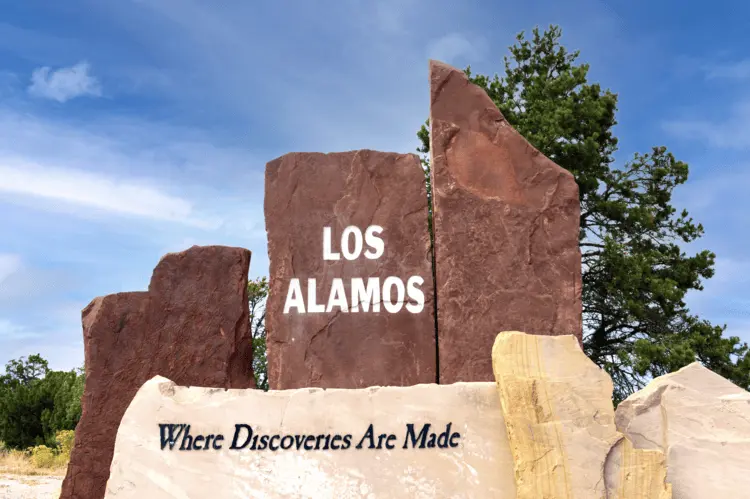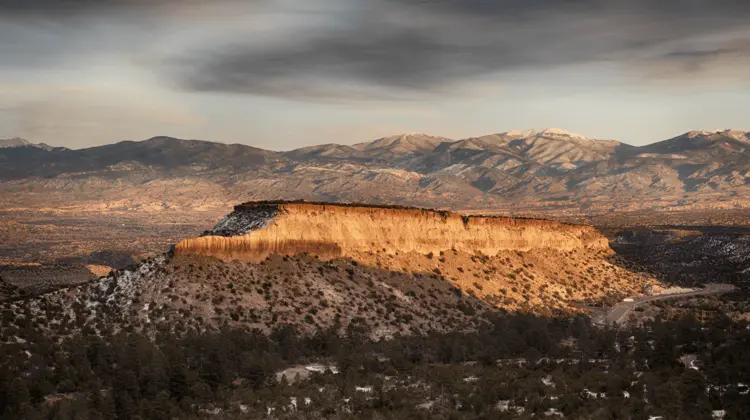
Chernobyl levels of plutonium pollution found around Los Alamos, despite the area being opened to the public after cleaning programmes
By
In 1943, as scientists at the Los Alamos National Laboratory (LANL) began work on the world’s first atomic bomb, the raw waste from the laboratory’s experiments flowed into a nearby canyon in the Pajarito Plateau in north-central New Mexico.
Over the next two decades, workers continued to dump untreated liquid waste, containing plutonium, uranium and other hazardous materials, into Acid Canyon, where it seeped into the soil and rock. When the US Atomic Energy Commission, a predecessor agency to the US Department of Energy (DOE), began clean-up operations in 1966, around 94 dump-truck loads of contaminated rock and sediment were removed from the canyon floor.
Enjoying this article? Check out our related reads:
By July 1967, Acid Canyon was considered sufficiently free of contamination to allow unrestricted access and removal of signs designating it as a contaminated area. Several more clean-up efforts, which removed additional contaminated soil, have taken place since.
Today, Acid Canyon is a popular recreational area, with a hiking trail that loops through hilly pine forests. LANL claims that any remaining radionuclide contamination in the area is ‘well within safe exposure ranges’, and that clean-up efforts in the canyon and Los Alamos are a success story.
Not everyone is convinced. ‘A clean-up, to me, would imply it’s somehow reasonably approaching background, pre-contamination conditions,’ says Michael Ketterer, emeritus professor of chemistry and biochemistry at Northern Arizona University. ‘In that sense, they have not cleaned it up.’
Early this year, US and UK media reported that ‘extreme concentrations’ of plutonium, cited to be similar to those found at Chernobyl, had been found in soil and water samples collected by Ketterer at sites around Acid and Los Alamos canyons. The samples, which Ketterer says were analysed at the Trace Element Analysis Center at
surface from ’50s and ’60s nuclear weapons tests, we might expect to see 0.05, 0.1, maybe 0.2 pCi of plutonium per gram. The very, very, very upper limit of anything I’ve ever seen from just these background sources is about one pCi per gram.’
Ketterer’s findings have reignited a long-standing debate between the DOE, which manages legacy contamination related to early LANL operations, and local activist groups concerned about the impact that residual radioactive waste could have on communities’ health. In a statement published on 4 September, Thom Mason, director of LANL, pointed out that the levels of plutonium reported in the media were consistent with publicly available DOE data, and were below levels that would require further clean-up.
He criticised news outlets for relying heavily on activist group messaging, without explaining ‘the science behind applicable environmental standards’. When approached by Geographical for further information, LANL declined to comment.
‘Obviously, I disagree quite strongly with everything that Mason has to say,’ says Ketterer. ‘I do not believe that long-standing debate between the DOE, which manages legacy contamination related to early LANL operations, and local activist groups concerned about the impact that residual radioactive waste could have on communities’ health. In
a statement published on 4 September, Thom Mason, director of LANL, pointed out that the levels of plutonium reported in the media were consistent with publicly available DOE data, and were below levels that would require further clean-up. He criticised news outlets
for relying heavily on activist group messaging, without explaining ‘the science behind applicable environmental standards’. When approached by Geographical for further information, LANL declined to comment.
‘Obviously, I disagree quite strongly with everything that Mason has to say,’ says Ketterer. ‘I do not believe that this is common public knowledge by any means, I think that just the media reaction here in the United States shows that this is something people don’t know about.’

While he asserts that he isn’t a health physicist, Ketterer says that in his 25-year career – during which he has collected and analysed some 50,000 samples from contaminated sites such as the Nevada Test Site, Rocky Flats, the Trinity Site and Chernobyl – he has never seen such levels of contamination in an area that isn’t closed off to the public.
‘And it’s not just a question of whether it can impact human health as it exists today. This is going to be there for another quarter of a million years, and it’s at the top of a canyon that’s rapidly eroding. This material is all going to be flushed downstream, to the floodplains of the Rio Grande, towards the Gulf of Mexico.’




